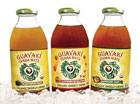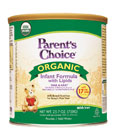
Almost
60% of the organic beverages market comprises non-dairy beverages ranging from
organic carbonated beverages to organic juice, tea and, in the case of Just
Energy’s recent launch, energy drinks.
A number of factors have propelled the organic beverage market, from general concerns about the safety of the food supply to personal worries about antibiotics and growth hormones in milk. In fact, sales of organic milk comprise the major bulk of the category and make up the sub-segment in which growth has been the greatest. However, sales of other organic beverages have also increased.
Defining and Understanding the Market
Organic products are defined as those grown without use of synthetic pesticides or fertilizers and containing no genetically modified organisms (GMOs). Thus, because the term “organic” refers to growing methods, not to processing or any other steps that follow, it is possible for a product to be made with organic ingredients and to contain other ingredients such as artificial colors or flavorings. It is possible, therefore, for a beverage to be made with organic fruit (fruit grown under organic conditions) and also contain non-organic ingredients such as flavorings or colorings.
Vying for consumer attention are products classified as “natural,” but not necessarily organic. Natural products must contain no artificial flavorings, colorings, additives or other ingredients, but they can be made with mainstream (instead of organically grown) ingredients, as long as the mainstream ingredients are not artificial. Labeling of natural products is not as consistent, nor is the natural label controlled by the government, as is the case with the organic label.
Consumers are often left to consider rather tricky questions. For example, is a processed food product made with organic ingredients and artificial flavorings healthier than a natural food product made with conventionally grown crops or animal products, but with no artificial color, preservatives or flavorings?
Choosing between organic and natural beverage products may also depend on cost. While both natural and organic products tend to cost more than conventional products, in many cases, the organic product can be more expensive than the natural product. Consumers must choose whether or not they want to spend more based on whether or not the organic guarantee is more important to them than a guarantee of “no artificial ingredients.”

Organic
energy beverages from Guayaki promise to be healthy energy providers, in such
flavors as EmpowerMint, Raspberry Revolution and Traditional Mate. Yerba Mate
contains 196 active compounds, including 24 vitamins and minerals, as well as
15 amino acids.
“Food Fears” Govern Many Purchase Decisions
Foodborne illness outbreaks seem to be an almost daily headline, and consumers’ concerns about E. coli, salmonella and other diseases affect their purchase decisions when it comes to choosing organic over mainstream products. Such was the case when the outbreak of foodborne illness traced to spinach in California was reported in 2006.When the outbreak was first noted, fingers pointed toward a grower of organic spinach, and the political side of the organics market came to light. Anti-organic proponents pointed out that organic food—grown with “natural and organic fertilizers” and without the benefits of “modern, scientific” fertilizers and pesticides—ran a higher risk of contamination, since the organic material used to grow the foods could contain animal manure or other bacteria-laden matter.
However, the widespread contamination of spinach goes beyond that one grower, and the FDA cannot identify any one specific farm or processor as the source of the E. coli. This suggests a larger issue encompassing ground water, drainage and contamination. Such outbreaks—and the ensuing confusion—leave consumers in a quandary about the safety of fresh produce and implants doubts as to whether organic is truly safer than non-organic. The question is whether the benefits of eating food grown without chemicals outweigh the risks.
For growers and manufacturers of organic juices and other beverages, contamination and foodborne illness are major concerns: many organic products are non-pasteurized and contain no preservatives. Freshness is key to their success, but consumers may also have to make serious decisions in order to balance their concerns about the healthiness of a chemical and preservative-free product with their worries about GMOs and other artificial ingredients in a more processed product.
The milk industry faces another set of hurdles: the concern about antibiotics and bovine growth hormones (BGH). Organic milk is produced with neither of these ingredients and therefore is perceived as a better—and more expensive—alternative to conventional milk. However, perception and fact may be challenging this long-held belief: for a number of years, producers have been moving away from BGH in conventional milk. Currently, a mid-level milk product that is antibiotic and BGH-free (but not organic) has come to market, providing consumers with another alternative to organic.

For
parents looking to start their children on organic beverages as young as
possible, Parent’s Choice has launched organic baby formula, which promises
17mg of docosahexaenoic acid.
Most Sales Derived from Non-Dairy Products
Almost 60% of the organic beverages market comprises non-dairy beverages, including soy milk, but also ranging from organic carbonated beverages to organic juice and tea. The wide-ranging variety of beverages in this segment demonstrates the extent to which organic has grown as a manufacturing method.Mintel reports that sales of organic non-dairy beverages amounted to $757 million in 2006, and the market grew 69% since 2001, demonstrating the extent to which organic beverages have expanded. While the market has been on an upswing, there have been some “bumps in the road” including the issue of supply. As demand for organics increases, the organic industry faces the problem of finding enough organic-certified land on which to produce the crops needed. As a result, many of the organic ingredients are currently being obtained from off-shore growers, adding cost to the final product and slowing production.
The decline in sales in the market is also linked to a decline in sales of soy milk. The soy market has been declining since 2005, in part because soy has become a “mature market” rather than an upstart, and soy products are easily found in traditional channels as well as natural supermarkets. Also contributing to the demise of soy sales has been a lack of definitive, medically proven news about the health benefits of the product. While it had been hoped that soy would serve a number of wellness issues, the current research allows the product to carry only one health claim, which pertains to soy and heart health.
New product launches in the non-dairy beverage category have increased steadily since 2006, with 298 new products brought to market in 2006 in the U.S. alone—more than four times the number launched in 2001, according to Mintel. The range of new organic products runs the gamut from coffee to smoothies and from water to carbonated beverages. Among the latest entrants are products made with some of the newest ingredients such as acai berries (as in Better World Shaman Smoothies Acai Berry Adventure) as well as beverages with new organic twists on established flavor and ingredient notes (for example, new organic coffee, tea and hot chocolate).
Organic Dairy Products: Strong and Steady Growth
Sales of organic dairy beverages (milk, half and half, and drinkable yogurt/kefir) increased 156% between 2001 and 2006, per Mintel. This substantial increase is due primarily to consumers’ desire for milk from cows that did not receive bovine growth hormones (BGH) or antibiotics. On the supply side, dairy farmers have increased the size of their organic herds to meet this demand, and retailers have begun to make private label organic milk more widely available.
More than a third of consumers purchased organic milk in the past two years, according to a survey conducted by Mintel in 2006. About a quarter of respondents choose organic milk because they believe it tastes better than non-organic milk, but the major driving concerns about choosing organic deal with the issue of growth hormones and health. More than half of respondents (56%) believe that organic milk is healthier than non-organic milk, and 52% choose organic because they are worried about BGH.
Consumers have been concerned about BGH in milk for a number of years, and the fear of the potential effects of growth hormones has been a major contributor to the burgeoning organic milk market. While it is true that organic milk is derived from cows that were not given antibiotics or BGH, there are other milk products on the market that can make the same claim that are not produced by organically raised cows.
In the milk industry, the cost difference between organic, natural and mainstream products is significant: the price difference for a half-gallon of milk can range from about $1.69 for a mainstream product to a dollar more for a BGH-free conventional product, to two or even three dollars more for the equivalent organic version. Consumers who buy organic milk primarily because it is free of BGH and antibiotics would likely move to natural or BGH-free conventional milk products because of the lower price, leaving the organic milk market to consumers who have motivations for buying organic beyond the hormone issue. Considering the rapid growth of the organic milk market over the past three years, such a move to another type of milk would have a major impact on the organic dairy market.
Unlike organic non-dairy products, there has not been a major flurry of new products on the organic dairy side. Mintel reports that just 47 new products debuted in the U.S. in 2006, down from the 58 new items launched in 2001. A host of new store brand organic milk products has come to market, indicating the extent to which the store brand side of retailing has been following successful strategies of its branded counterpart. Such major chains as Winn Dixie, Kroger and Safeway all now sell organic store branded dairy and soy products. Other new launches have focused on the growing drinkable yogurt and kefir market.
New products include those aimed at adults, such as Lifeway Foods Greek Style Kefir, as well as those for children, including Lifeway’s Probugs Organic Whole Milk Kefir (which comes in flavors definitely intended for the younger set: Orange Creamy Crawler and Sublime Slime Lime).
The Future of Organic Beverages: Up and Down
As more consumers worry about the integrity of the food supply and continue to seek out foods they consider to be healthy for themselves and their families, the market for organic products will expand. Three forces aid this substantial growth: rising consumer concern about the integrity of the food supply; governmental standards that clearly define the meaning of the term organic; and greater availability of organic food through mainstream channels.Among the new entrants into the organic marketplace is Wal-Mart. In 2006, that company announced its intention of selling an extensive line of organic products, ranging from milk to fruits, vegetables and packaged foods. Supermarkets, too, are increasing their lines of both store brand and branded natural and organic products.
There is some concern that organic food and beverages, which have seen their growth taper off between 2005 and 2006, are not as interesting to mainstream consumers as has previously been thought. Some retailers, discouraged by lower than anticipated sales of organic alternatives to mainstream products, have discontinued carrying such items as Prego and Ragu organic tomato sauces and have voiced concern that organic is a fad, rather than a long-term trend.
While organic milk may have established itself as an essential product because it is BGH-free, competition from non-organic, BGH-free milk may take sales away from the fastest growing segment of the organic beverages industry. Sales of Silk organic soy milk, on the other hand, may continue to be strong as consumers who drink soy beverages may be likely to reach for Silk instead of non-organic soy milk. This is not because of the inherent organic factor, but because Silk is a ubiquitous product in the refrigerated dairy case, as convenient to buy as any other dairy product.